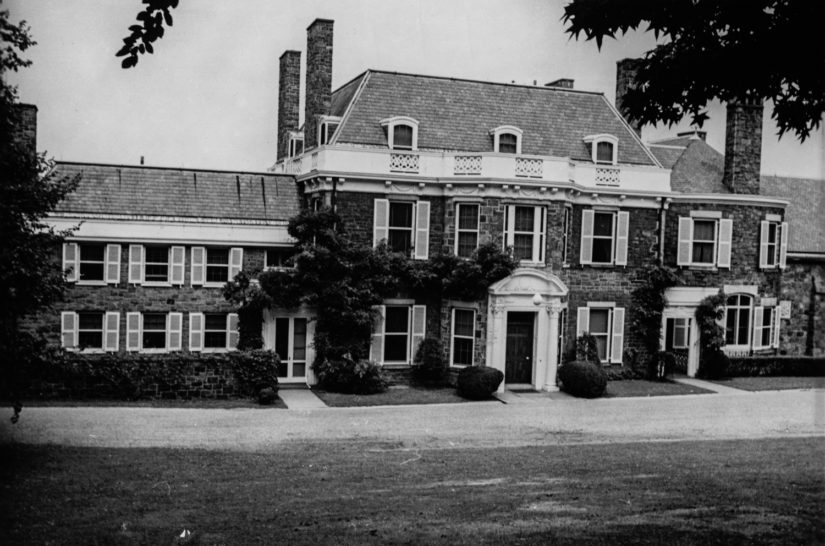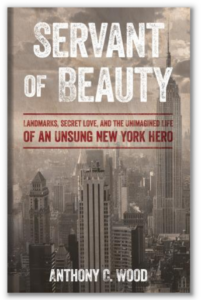
Riverdale Historic District
Located in the northwest Bronx, the Riverdale Historic District was designated after a 20-year effort.
Riverdale is located in the northwest portion of the Bronx. The area of what is now the Riverdale Historic District was part of a 100-acre parcel purchased in 1852 from William Ackerman for suburban development by wealthy businessmen.1 The land was initially divided up into seven estates. Five of these original homes survive, variously altered in the 19th and 20th centuries, as does much of the landscaping and topography.2 By the turn of the century, the area had become a popular place for commuters to settle, making it the earliest known railroad suburb of New York City.3 The New York City Landmarks Preservation Commission described the historic district as the “nucleus of development of the present-day community of Riverdale.”4 Leland Weintraub, the commissioner who moved for the district’s creation, noted that “most of the features commonly associated with the American romantic suburb of the mid-19th century,” were present in the area, including “a picturesque site, landscaping and architecture; connection to the city by accessible transportation and a layout adapted to the topography.”5
The Riverdale Historic District was designated by the New York City Landmarks Preservation Commission on October 16, 1990. It is New York City's 54th historic district. The vote to designate was unanimous.
1954: The Riverdale Community Planning Association is formed and lobbies successfully to have the area rezoned so that its vistas across the Hudson to the Palisades would not be blocked6
1975: A Special Natural Area District is established, affording the area's trees, steep slopes, and other natural features extra zoning protection7
1986: The New York City Landmarks Preservation Commission first considers a Riverdale Historic District, according to Robert Kornfeld
April 19, 1988: A public hearing is held at City Hall to discuss locations on the Landmarks Preservation Commission's agenda. Riverdale is among three other items on the agenda.8
October 16, 1990: Riverdale is designated an historic district by the New York City Landmarks Preservation Commission.
In 1953, a shopping center was proposed for West 242nd Street between Blackstone and Independence Avenues. Riverdale residents were urged by the City Planning Commission to accept the shopping center.9 However, this sparked neighborhood activists to recognize the need for a whole-scale rezoning of the area - from Spuyten Duyvil to the City line and from the Hudson River to Broadway. Uniting as the Riverdale Community Planning Association (RCPA), they campaigned throughout the community for a revised zoning scheme. Through these efforts, a new vision of Riverdale emerged: apartment houses along the top of the ridge would be balanced by a wide ribbon of single-family, detached homes on the slopes above the River.10 A gradual transition would occur from these single-family homes to high-rise apartments, with commercial development concentrated in areas where generated traffic would not clog the residential streets.
In response to the RCPA's efforts, the New York City Department of City Planning put forth a rezoning plan for the area in late 1953.11 Builders and developers argued that new zoning would put real estate investments in jeopardy. Both sides made their case before the City Planning Commission, which ultimately unanimously approved the rezoning.12
Bronx Borough President Jimmy Lyons criticized the rezoning after its approval by the City Planning Commission, calling it the biggest land grab ever to take place in New York City.13 However, the other members of the New York City Board of Estimate all voted for the plan, with Jimmy Lyons casting the final vote. Doing so, he declared, "I'm going to make it unanimous."14 Paul Elston, president of The Riverdale Nature Preservancy, saw the 1953-1954 rezoning effort as a watershed victory for Riverdale. "If that hadn't happened there would be apartments stretching to the Yonkers border," he said.15
In addition, Gilbert Kerlin served as president of the Riverdale Community Planning Association and was also involved in The Riverdale Nature Preservancy for 40 years. Kerlin, dubbed by Elston the "grandfather of that plan,"16 thought that without rezoning in 1954 and the subsequent declaration of the slope as a Natural Area District, "it seems inevitable we would have become another congested area of the Bronx."17
One of the major sites and attractions of the Riverdale Historic District is the Perkins estate at Wave Hill. The estate had been deeded to the City of New York in 1960. The Riverdale Nature Preservancy lobbied the City to take over the 28-acre estate to create a botanical garden and cultural center. In 1965 Wave Hill, Inc. was formed as a not-for-profit corporation. Wave Hill, as one of 34 New York City-owned cultural institutions, undertakes to “celebrate the artistry and legacy of its gardens and landscapes, to preserve its magnificent views, and to explore human connections to the natural world through programs in horticulture, education and the arts.”18
Robert Kornfeld was the driving force behind the effort to designate Riverdale for over 20 years. Kornfeld attributed getting newspapers to cover the push for designation was a key factor in his cause. However, despite an awareness campaign that began in 1970, by 1984 Kornfeld said he was still giving out flyers (some read: “Utopia Still Riverdale Enclave”) and “begging” people to fight for designation as a historic district.19 “We got people to come over. We just fought in every possible way. I went to everything. I went to all the meetings and talked with everybody and begged everybody,” Kornfeld said.20
According to Kornfeld, Laurie Beckelman, former executive director of the New York Landmarks Conservancy and deputy director of the Municipal Art Society, was the first person to fight in favor of a Riverdale Historic District.21 Beckelman was appointed as chair of the New York City Landmarks Preservation Commission in 1990, the year of Riverdale’s designation. “It’s hard to believe when I think about it,” Kornfeld said. “I started fighting in 1970 and finally got it in 1990.” He added: “It came out the way I wanted.”22
- Oral History with Robert Kornfeld, Sr.
New York Preservation Archive Project
174 East 80th Street
New York, NY 10075
Tel: (212) 988-8379
Email: info@nypap.org
- Riverdale Historic District, Current Photographs.
- “Bronx Landmarks-Riverdale: Riverdale,” The Historic Districts Council. Article retrieved 16 April 2016.
- ”Postings: Historic Designation; Recognizing Riverdale,” The New York Times, 21 October 1990.
- David Dunlap, “Landmarks Panel to Study Stable and Pepsi-Cola Sign,” The New York Times, 18 April 1988.
- ”Postings: Historic Designation; Recognizing Riverdale,” The New York Times, 21 October 1990.
- The Newsletter of The Riverdale Nature Preservancy, Preservancy News, Winter 2003.
- “About Us: History: Our History,” Riverdale Nature Preservancy. Article retrieved 16 April 2016.
- David Dunlap, “Landmarks Panel to Study Stable and Pepsi-Cola Sign,” The New York Times, 18 April 1988.
- The Newsletter of The Riverdale Nature Preservancy, Preservancy News, Winter 2003.
- Ibid.
- Ibid.
- Ibid.
- Ibid.
- Ibid.
- Dennis Hevesi, “Neighborhood Report: Riverdale; The Guardians of the Vista: Riverdale Nature Preservancy,” The New York Times, 1 May 1994.
- Ibid.
- Ibid.
- “About,” Wave Hill. Article retrieved 16 April 2016.
- The New York Preservation Archive Project, Robert Kornfeld Sr. Interview, 19 October 2007.
- Ibid.
- Ibid.
- Ibid.




